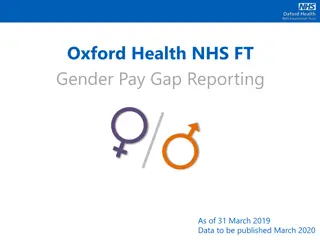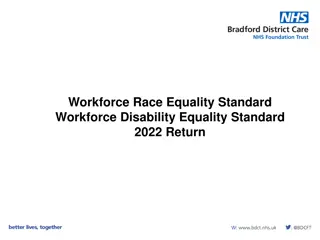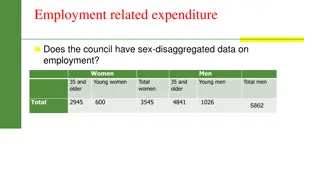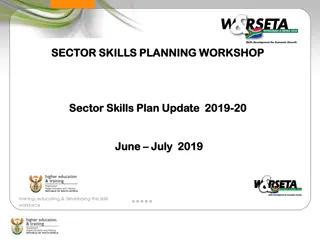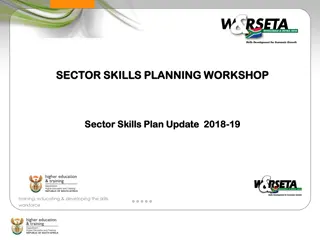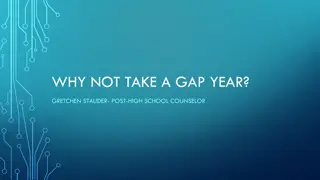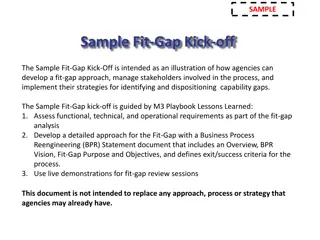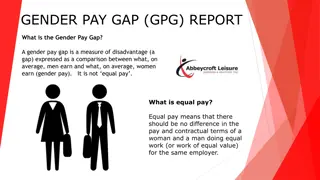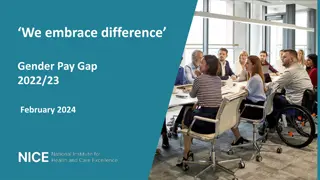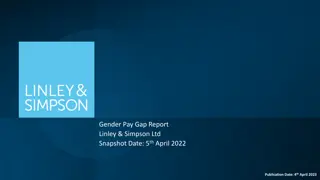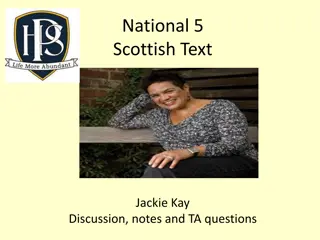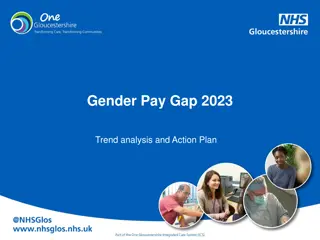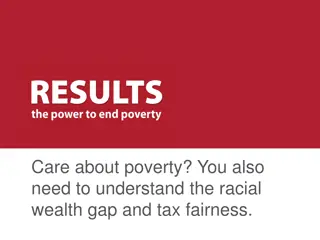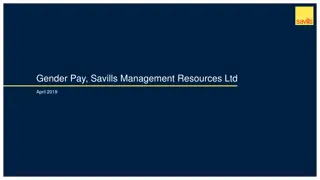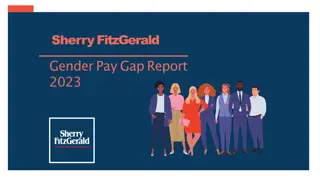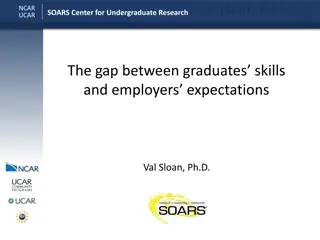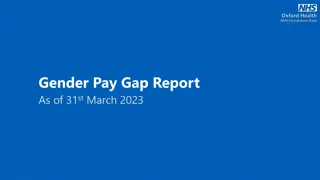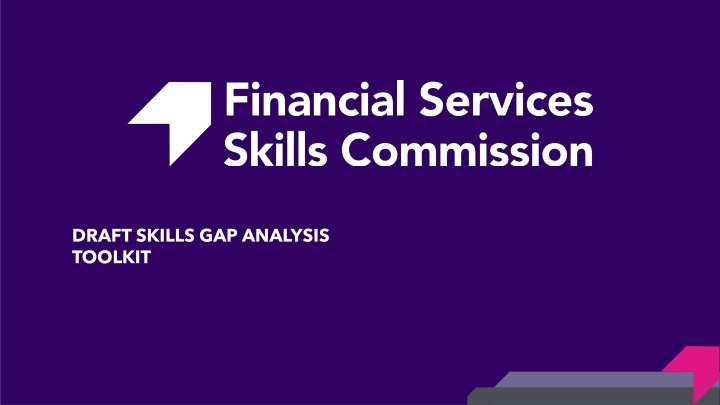
Future Skills Gap Analysis Toolkit for Financial Services Organizations
Enhance strategic workforce planning with the Skills Gap Analysis Toolkit, designed to identify and bridge future skills gaps in Financial Services organizations. This comprehensive approach includes workshops, templates, and a skills dictionary for effective planning and action.
Download Presentation

Please find below an Image/Link to download the presentation.
The content on the website is provided AS IS for your information and personal use only. It may not be sold, licensed, or shared on other websites without obtaining consent from the author. If you encounter any issues during the download, it is possible that the publisher has removed the file from their server.
You are allowed to download the files provided on this website for personal or commercial use, subject to the condition that they are used lawfully. All files are the property of their respective owners.
The content on the website is provided AS IS for your information and personal use only. It may not be sold, licensed, or shared on other websites without obtaining consent from the author.
E N D
Presentation Transcript
DRAFT SKILLS GAP ANALYSIS TOOLKIT
Skills Gap Analysis Toolkit Skills Gap Analysis Toolkit Contents Contents Slide What is the toolkit? What is the approach? Roles and responsibilities Gathering inputs Hints and tips Workshop 1 - Where are we now? Workshop 2 - Where do we want to be? - Output: Future Skills Summary Workshop 3 - What is the gap? - Output: Skills Gap Analysis Action Plan Please Note: This content is to be used in conjunction with the Data Template and Skills Dictionary
What is the Skills Gap Analysis Toolkit? Leading organisations use a skills gap analysis as part of a workforce planning approach And how can it help you identify future skills? The Skills Gap Analysis toolkit is designed to support Financial Services organisations identify the skills they will need in the future. Support strategic workforce planning needed to take action on skills gaps The approach is centred around 3 questions Where are we now? Gain insights into your entire workforce Where do we need to be in the future? How do we close the gap? Boost individual learning and development These questions are aligned to series of workshops with a set of supporting materials and templates to facilitate this task. The process typically takes 4-6 weeks, including 3 tailored workshops focussing on skills needs in the short, medium and long term. Improve recruitment efforts Creates a competitive advantage to face the "post- covid" ways of working This toolkit provides an approach and provides a set of supporting materials and templates to facilitate the task. These include: Approach outline and guide (including example workshop slides) Output templates: Future Work & Skills Summary and Skills Action Plan to capture the data your organisation will need to act on skills gaps. This spreadsheet is designed to be used in conjunction with the workshop slides. ADD QUOTE HERE A skills dictionary which provides definitions of key skills to drive greater alignment. The dictionary also includes key roles and key knowledge.
Gathering Inputs Gathering Inputs
GatheringInputs The skills gap analysis exercise is only as good as the quality of the input provided. Below are some tips to help you gather the best of what is available. Purpose of the business area and its contribution to revenue / cost Type of work and how it gets done Key performance measures that are in place (what does good look like?) Dependencies on the wider organisation and / or the role of suppliers or external resource in supporting the work Use of technology and tools to support the work Current Work Activity Current roles / jobs (these might be available from a system, an organisation structure or people report) Total heads / FTE in each role and where those roles are located Number of external resources (contractors / agency staff / consultants / partners) being used in each role (the resource mix) Demographic characteristics, in particular the proportion of the workforce approaching retirement Current Roles, Headcount & Resource Mix These can be found in role descriptions, on a learning management system or you can get an indication from the structure of an induction programme. If needed, an expert in the area (e.g. an HR Business Partner or Capability Lead) could help you build a rough starting position Current Skills & Proficiency Levels One of most critical inputs is an understanding of what is likely to change that will impact the way that employees work over the short, medium and long term. This could be driven by changes to: customer behaviours / demands, new products and services, technology use, policy, process or regulation and operating model and who is doing the work (in particular, the use of internal vs external resource) The best way to source this information is directly from the identified business leads. It may be confidential or a work in progress but it will give you a direction of travel and assumptions about where the business is going. You can use this as a baseline for the strategic workforce plan. Planned Changes / New Work Activity Start by understanding any pre-planned changes to FTE / Headcount which can be found in the operational plan or budget forecast for the year ahead. This will be based on expected levels of attrition and/or previously made commitments to reduce or increase headcount or onboard new resource e.g. apprenticeships or graduates. Any additional changes in workforce identified as a result of input 4 see table in cell above should be made incrementally (unless of course input 4 forces those previously agreed changes / commitments to be reviewed). Planned Changes to Headcount and Budgets
Hints & Tips Hints & Tips
Is the organisation ready for this approach? The following list of key ingredients , whilst non-exhaustive, are critical to completing a successful skills gap analysis and bring about meaningful action: Key Ingredients Detail A proper skills gap analysis takes both time and effort, both from you and the business. Senior sponsorship is needed to position the exercise and its benefits and to ensure it has the right level of support from the right people throughout . The right level of senior sponsorship Involving the right business people, in the right place with the right knowledge Ideally you are looking for A strategic lead alongside someone who has a practical understanding of the work, roles and skills that currently exist. More operational resources can struggle to move beyond the here and now and More junior resources may not have been involved in more sensitive discussions about strategic direction. Without an agreed, longer term (ideally 2 3 years) business strategy the exercise will be contained to the present day. Without a strategy that people are behind, you are likely to get inconsistent views of the future This risks resulting in short term solutions unfit for the medium to long term (e.g. bring in expensive temporary resource) or an incoherent plan. An agreed business strategy that extends beyond the current year Rely on recently completed work (assuming it is still accurate) where possible (e.g. current skills information or a future FTE forecast etc.) Reducing the amount of time and effort by re-using work will save time The business will appreciate it and might otherwise be resentful about needing to repeat work it has already done Awareness of any similar or related work that the business has recently completed to help accelerate progress Involving the right HR experts on hand to provide support (where available) e.g. HR business partners, recruitment, learning etc. Whilst the business are key in providing input on strategy, the right HR experts are required to identify and source skills: An HR or Learning Partner familiar with the current roles and skills in the business area is required to identify skills gaps Followed by more specialist support to help identify the most efficient and effective way to source these skills: build (learning & development), buy (recruitment), borrow (contractor / partnership resource), retain (culture, engagement or talent management) To do the exercise properly, everyone involved must be equally invested in its success, This is only possible if everyone feel that they are going to benefit from doing it right. So ensure that everyone is bought into the business benefits before you start or you risk just going through the motions. A clear articulation of the business benefit and tangible outputs that will result from the exercise
Tips for the Skills Gap Analysis Lead Facilitator Circulate the agenda and key collateral ahead of the workshop Gather as much information as you can prior to the workshops, Workshop 1 creates the foundation for the rest of the work so ensure you do not rush through the content. Tips for discussion Resist the temptation to jump to role and skills impacts too early Start with the long term view Be clear, you are not looking to identify and discuss every individual role and skill focus on c. 70 80% of the workforce. There isn t a definitive answer nor a commitment It is impossible to accurately predict the future the intent of this exercise is to capture assumptions and develop a best guess of potential changes / challenges / opportunities and their impact on work Capture assumptions Use the Skills Dictionary to provide a common language for the discussion Start with the long term view (4 years+) and then work back to medium term (2 3 years) and short term (1 year) this will help ensure the conversation is focussed on the future and on establishing a direction of travel. Where possible, stick to the skills titling used in the Skills Dictionary this removes the risk of capturing multiple versions of what is essentially the same Key Skill. At the same time, do not force fit and where additional Key Skills appear across multiple workshops, add them. Be clear about the purpose or benefits and engage constructively where you feel resistance. The exercise can be sensitive considering but it offers the opportunity is to plan ahead and put in place reskilling actions
Workshop 1: Workshop 1: Where are we Where are we now? now?
Workshop 1: Current Work and Current Skills Agenda What do we need to achieve at this Workshop? Understand the current work undertaken by your Business Area Identify 10 15 Key Roles that comprise c. 70 80% of the workforce in your Business Area Identify Key Skills that colleagues currently need to be successful in these Key Roles Identify the proficiency levels (Foundation, Proficient, Advanced) for each of these Key Skills for colleagues to be successful in these Key Roles Outline timing # Agenda Objective Introduction, agenda and objectives Welcome all members to the workshop and share agenda and objectives 5 minutes 1 UnderstandCurrentWorkundertaken by your Business Area Current work 10 minutes 2 Identify Key Roles Identify key Business Units / Areas of Work Identify Key Roles within each Business Unit / Area of Work Streamline Key Roles to 10 15 3 Key roles 40 minutes Identify Key Skills Brainstorm Key Skills by Key Role - use Skills Dictionary Identify any additional Key Skills required by Key Roles not in Skills Dictionary Identify proficiency levels for each capability (use proficiency definitions in Skills Dictionary) 4 Key skills 30 minutes 5 5 minutes Wrap up and agree next steps Agree immediate actions, next steps, timing, and responsibilities ahead of Workshop 2 10
Workshop 1 Current Work & Current Skills: Understand Current Work & Identify Key Roles 1 2 3 4 How is the current work divided up across the Business Area by individual Business Units (e.g. Branch) or by individual Role Types e.g. Sales, Service, Processing etc.) Of these roles, which ones are Key Roles (e.g. volume roles, strategically important roles, business critical roles etc.) What is the purpose of the Business Area and what work does it currently do? What roles comprise each of those Business Units / Role Types? Re f Role Type / Business Unit No. of Resources Key Role Grade 1 Key Role 1 Role Type / Business Unit 1 DATA INPUT INSTRUCTIONS 2 Key Role 2 3 Key Role 3 4 Key Role 4 5 Key Role 5 6 Key Role 6 Role Type / Business Unit 2 7 Key Role 7 8 Key Role 8 9 Key Role 9
Workshop 1 Current Work & Current Skills: Identify Key Skills & Proficiency Levels 1 2 3 Use the Skills Dictionary (or equivalent) to determine the 8 10 skills currently required For each skill assign a current level of required proficiency For each Key Role Proficiency Definitions 1 Customer & Relationship Management Customer Needs & Solutions Customer Service & Support Customer Relationship Management Customer Processing Complaints Management Key Role 1.1 1.2 1.3 1.4 1.5 Foundation: Understands and demonstrates in typical everyday activities 1 Key Role 1 Key Role 2 2 Project & Change Management Project Management Agile Delivery Management Business Analysis Business Readiness & Implementation Data & Analytics Data Management Data Collation & Assessment Data Analysis & Insight Data Reporting Data Science Business & Customer Experience Design Business Design Service Design Key Role 3 2.1 2.2 2.3 2.4 3 3.1 3.2 3.3 3.4 3.5 4 4.1 4.2 Intermediate: Demonstrates proficiency in more complex scenarios and able to support others Key Role 4 Key Role 5 2 Key Role 6 Key Role 7 Key Role 8 Advanced: Able to apply in multiple complex scenarios and recognised as an expert Key Role 9 3 Proficiency level analysis is optional depending on level of detail required
Workshop 2: Workshop 2: Where do we Where do we want to be? want to be?
Workshop 2: Future Work and Future Skills Agenda What do we need to achieve at this Workshop? 1. 2. 3. Understand Skills Gaps Analysis, why we are doing it and the approach we will take Confirm understanding of current Key Roles in your Business Area, the work they do today and the Key Skills required Understand what new activity (if any) that these roles may be expected to perform in the future (short, medium and long term) alongside any planned changes to proposition, process or technology that might impact how they perform their current role Understand any expected changes in headcount (including how we might use temporary resource / external partners to help resource work) and what the drivers of this change might be (e.g. increased automation, increased business demand, retirement of systems etc.) Given these changes, understand what will be the priority skills for the future (and which current skills might decline in importance) 4. 5. Outline timing # Agenda Objective Introduction, agenda and objectives To welcome all members in the workshop and share agenda and objectives of each item 5 minutes 1 2 Confirm workshop 1 outputs Confirm Understanding of Current Work, Key Roles and Key Skills 20 minutes New activity / planned changes to proposition in the short (<1 year); medium (2 3 year) and long term (4 year+) Any expected changes in headcount / resource mix and drivers in the short, medium and long term Impact of these changes on key roles and key skills e.g. priority skills in the future and current skills likely to decline Complete future skills summary templates (during or after the workshop) 3 Explore future work and future skills 60 minutes 4 5 minutes Wrap up and agree key next steps To agree immediate actions, next steps, timing, and responsibilities ahead of Workshop 3 14
Workshop 2 Future Work & Future Skills : Discuss & Understand Future Work Useful reference documents: Tips for discussion Participants are all bringing different and valuable skills and knowledge to the sessions. Organisation / Business Area Strategy Documents Organisation / Business Area Operational Plans What are the potential / expected changes / challenges / opportunities and what that will mean for work in the future ? Organisation / Business Area Targets or Commitments Business Area Performance Insight & Opportunities to Improve (either from internal stakeholders or external consultancies) Do not be tempted to jump to role and skills impacts too early. Focus on the future not on incremental or tactical change. List of Projects / Programmes Impacting Business Area Key Projects / Programmes Impacting Organisation / Business Areas What is the long term view (4 years+) and then medium term (2 3 years) and short term (1 year) There is not a definitive answer nor a commitment expected from this discussion just an understanding of potential changes and implications External Thought Leadership External Technology / Customer / Employee Forecasts External Benchmarks Capture assumptions to refer back to later Competitor Insight / Cross-Industry Insight 15
Workshop 2 Future Work & Skills Summary: Context for change Identify any relevant changes It is impossible to accurately predict the future the intent of this summary is to capture our best guess . The context for Changes / Business Area Strategy should serve to provide a series of commonly understood and agreed assumptions against which the forecasts can be made Externally driven changes Internally driven changes o customer behaviour / needs / expectations the wider business strategy, o employee behaviour / needs / expectations the operating model, o Policy and regulation adoption of new technology, o in / improvements to technology increase focus on automation, o Changes resulting from M & A activity or future market opportunities changes resulting from process improvement / re- engineering, o changes or additions to the products and services being delivered, o a change in demand for existing products and services etc. Short-term/medium-term/long-term 16
Workshop 2 Workshop 2 Future Work & Skills Summary Future Work & Skills Summary The Future Work and Skills Summary includes 3 key elements context for change/business area strategy, change in business area profile and business area key role change, priority skills and declining skills The purpose of the Future Work & Skills Summary is to summarise the output from Workshop 2 so that the Business Area Lead can review, amend and ultimately approve the forecast changes in work, roles and skills Once agreed, this summary provides an initial baseline from which targeted actions can be identified, agreed and developed to help proactively build the right resource mix over time through a combination of build (training), buy (recruitment), borrow (external resource), bind (retain) or redeploy (from one Key Role to another, from one Business Area to another or from one organisation to another)
Workshop 2 Future Work & Skills Summary: Context for change - TEMPLATE - Context for Changes / Business Area Strategy (Name of Business Area ) Provide a baseline for the review by including a short overview of the purpose of the business area and the current work undertaken. Ensure you include its size, key locations, whether it is customer-facing or non customer-facing and most common activities. Outline the context for the change / the business strategy over the short (< 1 year), medium (2 3 years), long term (4 years +). Externally driven changes such as changes in Internally driven changes such as changes in A A B B C C Short-term/medium-term/long-term
Workshop 2 Future Work & Skills Summary - TEMPLATE - Current Headcount Future Headcount Key Role Change in Role Change in Skills Action Type Build the skills of 50 Redeploy the remaining 150 Payments Analyst Planned Changes Where possible, activities will be automated, with robotics / artificial intelligence used to complete tasks currently undertaken by colleagues In addition there will be an increase in Straight Through Processing (STP), removing any human touch points Priority Skills for the Future Payments Technical Knowledge (Business Area Specific) A deepening of payments expertise, a more technical understanding of the rules, new regulations and an understanding of the new end to end payments process Service Design Skills - Excellent service improvement and design skills will be fundamental help us identify of opportunities and drive continuous improvement Agile Project Management - An awareness of how to deliver change using the new methods Artificial Intelligence - An understanding of how the technology is being used, where manual intervention is required and what the opportunities are in the future Data Analysis & Insight - Ability to interpret the outputs of automation in order to identify and respond to trends Analytical Thinking - Ability to deal with a greater proportion of more complex problems and queries Resilience - Ability to deal with the volume and the pace of change, particularly given the employee impact 200 50 Role Implications With the automation of simpler, repeatable activities, and the removal of activities through STP, there will be a reduction in the number of more junior colleagues The remaining activities that can t be automated, will be more complex and require higher graded colleagues that are able to support new end to end processes and more complex activities Colleagues will need to understand how the new robotics / artificial intelligence is being applied so that they can effectively support the exceptions processes and also spot opportunities to further leverage this form of automation Declining Skills Customer Processing - the manual processing of transactions will be placed by automation resulting in a reduction of the needs for these more traditional skills
Workshop 2 Future Work & Future Skills: Change in Headcount, Key Roles & Key Skills Tips for discussion Committed Reductions Current Headcount Short Term (<1 yr) Medium Term (2 3 yr) Long Term (4 yr+) What are the priority skills (key 4 5) that will be required by these Key Roles and proficiency level (foundation, intermediate or advanced)? Permanent 1 Temporary External Partners Are there any skills (if any) that might be required less in the future? 2 3 4 Ref Role Type / Business Unit Key Role Change in Headcount Change in Skills 1 Key Role 1 OPTIONAL? Use the Skills Dictionary to provide a common approach Role Type / Business Unit 1 2 Key Role 2 3 Key Role 3 Are there existing headcount reductions in any operational plans ? Bear in mind if you are discussing headcount this information is sensitive 4 Key Role 4 5 Key Role 5 6 Key Role 6 Role Type / Business Unit 2 7 Key Role 7 What Key Roles are likely to be impacted by the changes to work? (focus on no more than 4 5 Key Roles) 8 Key Role 8 9 Key Role 9 10 Key Role 10 11 Key Role 11 Is there likely to be a change in headcount or resource mix over the short, medium and long term for Key Roles? 12 Key Role 12 Role Type / Business Unit 3 13 Key Role 13 14 Key Role 14 15 Key Role 15
Workshop 2 Future Work & Skills Summary: Change in Workforce Profile EXAMPLE OUTPUT - TEMPLATE - Actions Summarise key changes in role profile and rationale, focussing on: 3500 Forecast overall reductions / increases in headcount and the rationale External Partner Resource 300 3000 400 Forecast changes in specific Key Roles over time Temporary Resource 200 200 Key Roles forecast to significantly decrease over time and the rationale Key Role 15 200 200 40 100 20 Key Role 14 150 2500 200 Key Roles forecast to significantly increase over the period and the reason for this Key Role 13 300 200 Key Role 12 400 Key Roles forecast to initially increase before decreasing later and the rationale 600 Key Role 11 2000 Key Role 10 800 Forecast overall changes in the proportion of permanent headcount compared to external partner resource / temporary resource and the rationale 1000 Key Role 9 600 Key Role 8 1500 500 Key Role 7 Forecast changes in the types of roles (e.g. increase in customer facing roles, decrease in back office roles etc.) and the rationale 300 200 Key Role 6 70 1000 200 Key Role 5 Forecast changes in the grade / level mix (e.g. reduction in proportion of junior resources, increase proportion of middle- graded technical resources etc.) and the rationale 100 300 Key Role 4 300 400 Key Role 3 500 Any high level observations on the key priority skills for the business area and those skills forecast to decline Key Role 2 500 600 600 Key Role 1 500 100 0 Current Short Term (< 1yr) Medium Term (2-3 yr) Long Term (4yr+)
Workshop 3: Workshop 3: What is the gap? What is the gap?
Workshop 3: Skills Gaps & Actions Agenda What do we need to achieve at this Workshop? 1. Confirm understanding of future work, future workforce mix, Key Roles most impacted by the change and priority / declining Key Skills and the approximate size of the gap between current and future over the short, medium and long term Discuss and agree the action types required to proactively close each of the gaps will the focus of our efforts be on building, buying, borrowing, retaining or redeploying skills? Work with the relevant HR Specialists (Learning, Recruitment, Talent, Graduates & Apprenticeships, Redeployment etc.) to identify potential actions against each of these action types (Build, Buy, Borrow, Retain and Redeploy) to help close each of the gaps Agree what actions we intend to take forward, who will own then and when they should be completed 2. 3. 4. Outline timing # Agenda Objective Introduction, agenda and objectives Welcome all members to the workshop and share agenda and objectives 5 minutes 1 Confirm Understanding from Workshop 2 Future work, future workforce mix, impacted key roles and priority and declining key skills 20 minutes 2 Discuss and Understand Action Types & Actions to Close Skills Gap Action types to close gaps (Build, Buy, Borrow, Retain and Redeploy) Actions to support each action type Complete the skills action plan templates (during or after the workshop) 3 Action planning 60 minutes Agree next steps (e.g. any changes to documents; developing action plan, ongoing approach to tracking and managing etc.) (5 min) 4 5 minutes Wrap up and agree next steps 23
Workshop 3 Skills Gaps & Actions : Future Work, Future Workforce Mix, Impacted Key Roles and Priority / Declining Key Skills 1 Tips for Discussion Use the Business Area s Future of Work & Skills Summary created in workshop 2 as the basis for the discussion: Start by ensuring that attendees are comfortable with the context for the changes / the business area strategy (and any assumptions that have been captured) this summary is the foundation for the exercise so it is important that there is a consensus 2 Test the proposed change in the workforce profile, focusing on the overall size and shape of the workforce profile, how quickly it changes and the key roles that are likely to increase / decrease over the short, medium and long term 3 Then look at identified priority / declining skills by Key Role and ensure you: highlight the Action Type that has been initially identified (e.g. Build, Buy, Borrow, Retain or Redeploy) and the number of employees that will be targeted by each i.e. we would plan to hire (buy) 100 employees or train (build) 200 employees This activity can be done in advance of Workshop 3 if possible
Workshop 3 Five Action Types to Close Gaps Consider which relevant Human Resources Specialist should lead on the relevant Action Type depending on which resources are available to ensure their expertise and experience is incorporated. For example; HR Learning Specialists could lead on the Build discussion; Build Buy Borrow Retain Redeploy This includes Re-skilling / Up- skilling / Training existing staff. This covers bringing permanent resource into the workforce from outside. This includes hiring Temporary staff and working with Partners. This means creating a retention plan to ensure that you do not lose those employees that already have the skills you need, whilst you are closing the gaps elsewhere. This means identifying populations who may be in roles or have skills that aren t needed in the future and supporting them to be redeployed either elsewhere in the organisation or in another organisation. Divided by length & complexity: Often more expensive than Building but faster to onboard than Buying. Use Often the most expensive Action Type. Use if: up to 1 week; 2 weeks up to 3 months; a) building the skills takes too long / is too expensive or a) As effective temporary cover until you have time to build skills internally 3 months+ Starting this process early is important. b) if an immediate injection of different skills is required Foundational Training Course Online Skills & Knowledge Hubs Technical Training Programmes External Training Courses / Programme Professional Qualifications / Accreditations Apprenticeship Programme (Internal) Internal Rotation Programmes Short Term Job Secondments On the Job Coaching b) To deliver non-core activity in a more cost effective manner Improve Reward & Recognition Individually Align Role Purpose, Responsibilities & Activities Offer Growth & Development (incl. Opportunities) Improve Work Environment & Technology Increase Work Flexibility & Autonomy Improve Line Management & Support Online Re-skilling / Redeployment Hubs Re-skilling incentives and time Increased transparency of internal/external job opportunities Dedicated Redeployment Support Cross-organisational Redeployment Partnerships Enhance Employee Value Proposition & Brand Targeted Recruitment Campaign Apprenticeship Programme (External) Graduate Development Programmes Use of Fixed Term Contractors Use of Strategic External Partnerships Use of Consultancies
Workshop 3 Skills Gaps & Actions: Actions to Close Tips for Discussion Build Discuss each Action Type in order Summarise Key Roles and Skills to be built These numbers are rough approximations to guide thinking not targets or commitments Highlight what the combination and relative size / scale of Action Types tells you about the work to be undertaken: Buy Summarise Key Roles and Skills to be bought Is the strategy primarily about building, buying or borrowing skills? Is the effort to build skills mainly about setting a new baseline or is it about developing deeper, technical skills? Borrow Summarise Key Roles and Skills to be sourced externally on a temporary basis How does the strategy change over the short, medium and long term and why? Will it be challenging to buy skills and why? Retain Summarise Key Roles and Skills to be retained What is the relative importance of retaining employees in Key Roles / with Key Skills to the Business Area and have any particular themes already emerged? Redeploy What is the relative importance of redeployment and is this likely to be within the Business Area, within then organisation or outside the organisation Summarise Key Roles and Skills to be redeployed
Workshop 3 Workshop 3 Skills Action Plan Skills Action Plan The Skills Action Plan helps to summarise, by business area, the outputs and actions from the 3 workshops in core templates. These can then be agreed and used in discussions with key stakeholders for the purpose of planning.
Skills Action Plan Action Types & Observations [Name of Business Area] - TEMPLATE - Action Types Action Types 0 100 200 300 400 500 600 700 800 900 Time Period Build - Foundation 300 100 100 Medium Term (2-3 Short Term (< 1yr) Long Term (4yr+) Build - Intermediate 100 600 100 Total Resources Impacted yr) Action Type Build - Advanced 100 300 100 Build - Foundation 300 100 100 500 Buy Build - Intermediate 100 600 100 800 100 50 25 Build - Advanced 100 300 100 500 Borrow 300 100 50 Buy 100 50 25 175 Retain 200 200 200 Borrow 300 100 50 450 Retain 200 200 200 600 Redeploy 100 300 400 Redeploy 100 300 400 800 Short Term (< 1yr) Medium Term (2-3 yr) Long Term (4yr+)
Skills Action Plan Action Types & Observations [Name of Business Area] - TEMPLATE - Action Types Build Summarise Key Roles and Skills to be built Time Period Medium Term (2-3 Short Term (< 1yr) Long Term (4yr+) Buy Summarise Key Roles and Skills to be bought Total Resources Impacted yr) Action Type Build - Foundation 300 100 100 500 Borrow Summarise Key Roles and Skills to be sourced externally on a temporary basis Build - Intermediate 100 600 100 800 Build - Advanced 100 300 100 500 Retain Buy 100 50 25 175 Summarise Key Roles and Skills to be retained Borrow 300 100 50 450 Retain 200 200 200 600 Redeploy Summarise Key Roles and Skills to be redeployed Redeploy 100 300 400 800
SkillsAction Plan Action Plan [Name of Business Area] - TEMPLATE - Time Period Action Type Short Term (< 1yr) Medium Term (2-3 yr) Long Term (4yr+) Total Resources Impacted Buy 100 50 25 175 Buy Actions Short Term Action Medium Term Action Long Term Action 1 Action Title Description of action Q1 2021 2 Action Title Description of action Q1 2021 3 Action Title Description of action
Skills Action Plan Action Plan for Build skills [Name of Business Area] - TEMPLATE - Time Period Action Type Short Term (< 1yr) Medium Term (2-3 yr) Long Term (4yr+) Total Resources Impacted Build - Foundation 300 100 100 500 Build - Intermediate 100 600 100 800 Build - Advanced 100 300 100 500 Build Actions Short Term Action Medium Term Action Long Term Action 1 Action Title Description of action Q1 2021 2 Action Title Description of action Q1 2021 3 Action Title Description of action 4 Action Title Description of action 5 Action Title Description of action 6 Action Title Description of action You can use the same template for any Action Type.

